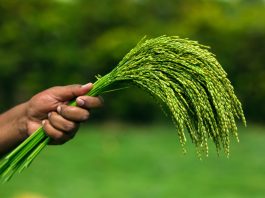Facing the challenge of food loss at primary production: understanding, measuring, training and adopting.
The right to food is defined by the United Nations as the physical and economic access of everyone to sufficient food or the means to obtain it. However, this is not being met because conflicts, climate change, social inequalities, economic instability, and poor governance hinder effective food distribution. Global hunger isn’t about a lack of food. In fact, although there is enough to feed every single person on the planet, preliminary studies estimate that one third of all food produced for human consumption could be either wasted or lost.
The FAO reports that more than 700 million people will be severely hungry in 2022, and this number has been rising steadily since 2014. FAO also estimates that between 1.3 and 1.6 billion tonnes of food out of total annual production leaves the food supply chain without being eaten. WWF estimates that in the primary sector alone, the figure could be as high as 1.2 billion tonnes per year.
This not only contributes to food insecurity but also harms the environment through greenhouse gas emissions, the waste of water resources and the degradation of some ecosystems and their biodiversity.
The European Commission has made progress in tackling food loss and waste, but significant challenges remain. Regulatory, technical and social barriers constrain reduction efforts, particularly at the primary production stage, where measuring food loss is complex and costly. Although the EU has set quality standards for measuring food waste, it has excluded primary production due to these complexities. A lack of common methodology and understanding of the key drivers further complicates accurate estimation.

To address these challenges, the European Commission funded FOLOU, a four-year project coordinated by the BETA TC (UVic-UCC) with 16 partners from ten countries. FOLOU aims to raise awareness and create systems to measure, monitor, and assess food loss at the primary production stage. The project’s goal is to help key stakeholders – such as producers, retailers, consumers, policymakers, and researchers – adopt effective, innovative solutions. FOLOU’s approach is based on four levers of change: understanding food loss, measuring it accurately, providing training, and supporting the adoption of best practices.
Understanding
The first step in reducing food loss and waste is to define it accurately. Over the years, the various initiatives aimed at tackling this phenomenon have been severely hampered by the lack of uniformity in definitions, leading to numerous inconsistencies and ambiguities. This difference in the use of terms is not only a technical problem but also arises from the different mandates and objectives of the supporting organisations.
FOLOU has been working on a common definitional framework of what food loss is with the dual purpose of having a coherent definition to be used in all project activities and, more importantly, a common definition that could be accepted at the EU level and that is aligned (and does not overlap) with the current EU definition of Food Waste.
It is also crucial to understand the causes of food loss. The main factors behind food loss can be categorised as behavioural, societal, and environmental. Behavioural factors involve the actions, beliefs, and skills of farmers, such as limited knowledge of proper harvesting methods, incorrect timing, inefficient planting scales, or insufficient training, which can lead to waste.
Societal factors include external influences like market prices, regulations, and cooperation within the food supply chain. This includes low food prices, strict industry standards (regarding weight, size, and quality), outdated equipment, poor transportation infrastructure, and shortages of skilled labour.
Environmental factors involve natural conditions, such as weather, pests, and diseases, that also contribute to food loss. Together, these elements determine how much food is lost before reaching consumers, leading to both direct and indirect consequences, such as economic costs, lower profits, reduced consumer value, and decreased labour productivity and wages. Addressing food loss requires changes in individual behaviours, organisational practices, and institutional policies.
Another important aspect of the FOLOU project is its work in defining Category Rules for the sustainability assessments related to food loss. These category rules will provide guidelines on how to measure food losses by country and commodity, as well as quantify their environmental impacts using Life Cycle Assessment, which is in line with the EU Environmental Footprint methodology. They also address the social and economic implications through Social Life Cycle Assessment and Life Cycle Costing.
Measuring
In order to answer the question of how much food is lost for each commodity group at EU and national level, FOLOU contributes to addressing the main challenges of the measurement lever: the need for common methodologies to measure and report food losses at the primary sector level, and the need for cost-effective ways to measure food losses at the primary sector level, by developing innovative tools and better practices for measuring and estimating food losses.
Quantification methodology and reporting
Using the FOLOU food loss definition framework as a starting point, the project is developing a common methodology to define minimum quality requirements and detail how to measure food loss, which is currently in a second draft version. So far, interviews and surveys have been used to quantify food loss. With the feedback received, a ‘Food Loss Quantification Manual’ will be published later in the project, together with a roadmap to contribute to its standardisation (e.g. as a useful document in the development of the forthcoming ISO related to ‘Measuring methods for determining food loss and waste’).
This ‘Food Loss Quantification Manual’ will provide detailed steps for quantification in the primary sector, considering the main food group-specific categories (fruits and vegetables; cereals and pulses; roots, tubers and oilseeds; aquaculture and fisheries; meat and dairy products) and the different production systems (conventional, organic and agro-ecological).
Aligned with the quantification manual, the project is also creating a new food loss registry to operate at the national level. This registry will allow public authorities to collect food loss data from farmers and primary producers, which will then compile the information into national and European databases, like the Pollutant Release and Transfer Registry (PRTR).
The national/regional FL registry will act as a monitoring tool for public administrations, helping them to collect detailed data on food losses. Its main purpose is to provide insights into the amount, causes, and locations of food loss across EU regions, allowing for a better understanding and analysis of the issue. The registry will collect farm-level data, which will then be aggregated at the regional level. Public authorities can use this platform to monitor and evaluate the performance of the agricultural sector in each region.
This information will allow authorities to quantify food losses along the food supply chain, develop evidence-based policies, make strategic decisions and effectively track progress. Collecting and registering food loss data also empowers farmers to develop and implement prevention and reduction strategies. The registry system is designed to work alongside national or regional Food Loss and Waste regulations that require farmers to submit data. It will be integrated with existing annual agricultural declarations, which provide comprehensive farm-level data.
Innovative food loss measuring tools
FOLOU is also advancing the use of six innovative tools to improve the accuracy of food loss measurements, using technologies such as UAVs, blockchain and social networks. These tools have already been established and tested within FOLOU to improve food loss measurement and forecasting.
Key developments include conducting field campaigns and collecting data through remote sensing and online sources, annotating and augmenting data to improve quality, establishing data analysis pipelines for pre-processing, and creating prototype models for estimating food loss. These efforts are all part of a broader initiative to develop robust platforms for assessing food loss with greater precision.
Assessment of the magnitude of food loss
Finally, work has been carried out on the estimation of the amount of food loss per commodity at a country level and at the EU level. The quantification method was adapted from that used by the JRC in its work ‘Building a balancing system for food waste accounting at the national level.’
The agricultural and livestock production per country and per product was obtained from the commodity and food balance sheets (statements summarising the supply and demand for a given commodity over a given period) and the food loss coefficients (used to calculate the food loss in relation to the total production).
This information is based on updated food loss percentages collected from different national repositories, case studies, and new statistical reports for different products within each commodity group at the country and EU levels. In a later phase of FOLOU, the food loss coefficients will be updated with experimental data and actions from the case study.
Training
FOLOU aims to equip various stakeholder groups – including researchers, policymakers, public administrators, farmers, and primary producers – with the skills needed to drive meaningful change. To support this, FOLOU has developed a ‘Comprehensive Learning Framework on Food Losses,’ which will form the basis of an eLearning centre.
This eLearning centre will offer five specialised courses aligned with FOLOU’s technical activities: an introduction to food loss in primary production, methods for measuring food loss using FOLOU’s methodology, innovations in food loss measurement and estimation, the sustainability implications of food loss, and strategies for integrating food loss considerations into policy and decision-making.
Adopting
FOLOU aims to expand the impact of its project results by building stakeholder capacity and implementing effective governance strategies to support recommendations, policies and strategies to reduce food loss in the primary sector. To achieve this, FOLOU has undertaken various parallel activities to cluster and create synergies with related ongoing projects, actively participate in European platforms related to food loss, and strengthen collaboration with those actors that can strategically enhance the results of the project.
The project is engaging key players and policymakers through a twinning programme and advocacy efforts to promote strong governance tools and funding initiatives. The FOLOU Twinning Regions Program (TWRP) is a 24-month initiative launching in January 2025, where FOLOU partners will work with external actors to validate food loss quantification methods and test FOLOU’s IT-based monitoring technologies.
This programme will provide technical assistance for measuring food losses across five key food categories and fosters peer-learning and knowledge sharing among participants. All technical and scientific efforts within FOLOU are designed to align closely with new policies and strategies that support the project’s goals, ensuring that progress is backed by strong policy development.
In conclusion, tackling food loss is essential to ensure global food security. The European Commission has launched projects such as FOLOU to develop innovative policies and methodologies to reduce food loss by tackling its root causes. Through initiatives such as the Twinning Regions programme, capacity-building efforts and the development of new methods for quantifying food losses, FOLOU is paving the way for more effective governance and policies.
As a result, its outcomes are expected to be a major turning point in addressing the challenges of food loss, leading to significant progress towards more sustainable food systems in the EU and beyond.
Please note, this article will also appear in the 20th edition of our quarterly publication.









